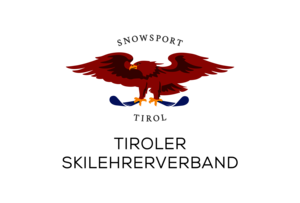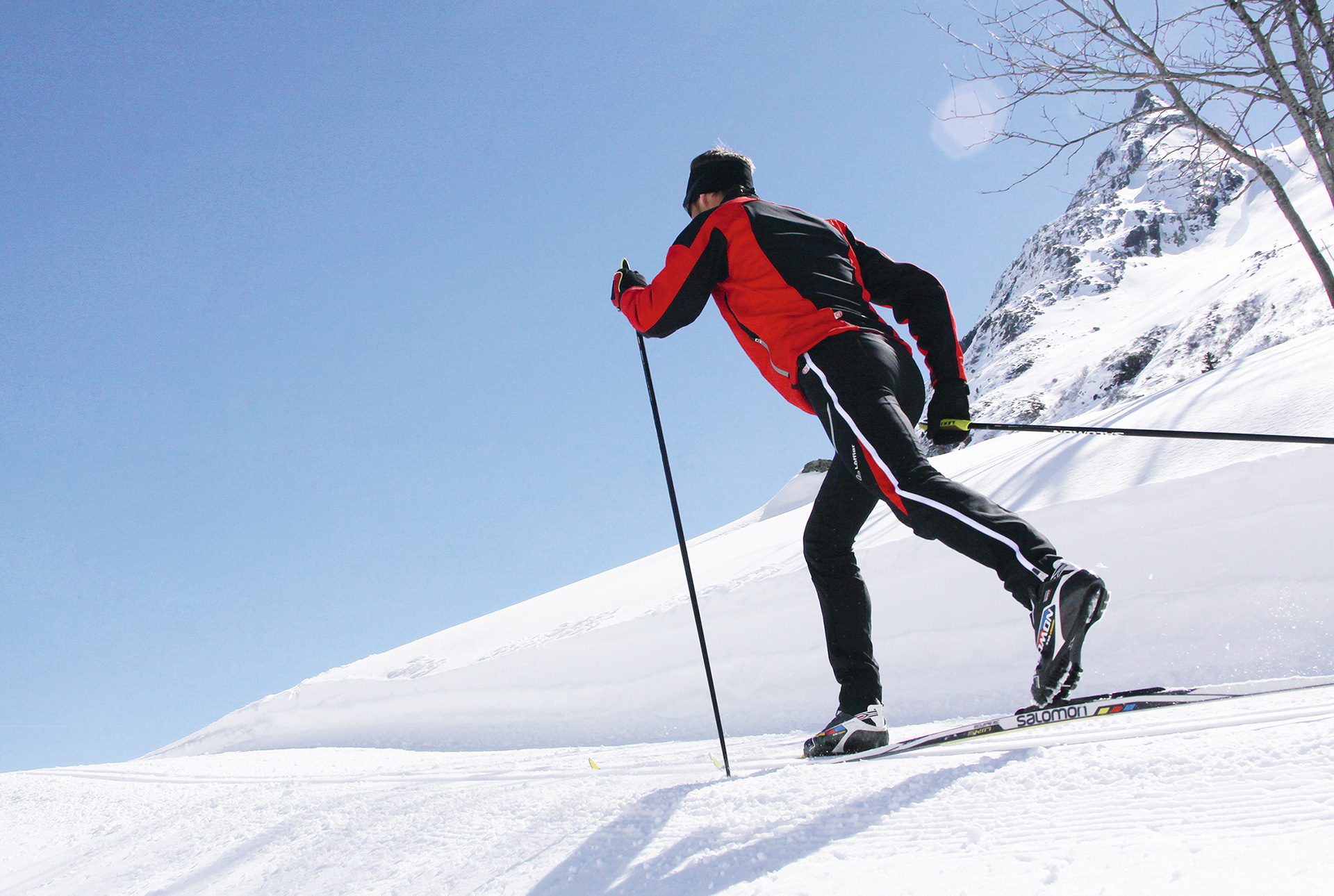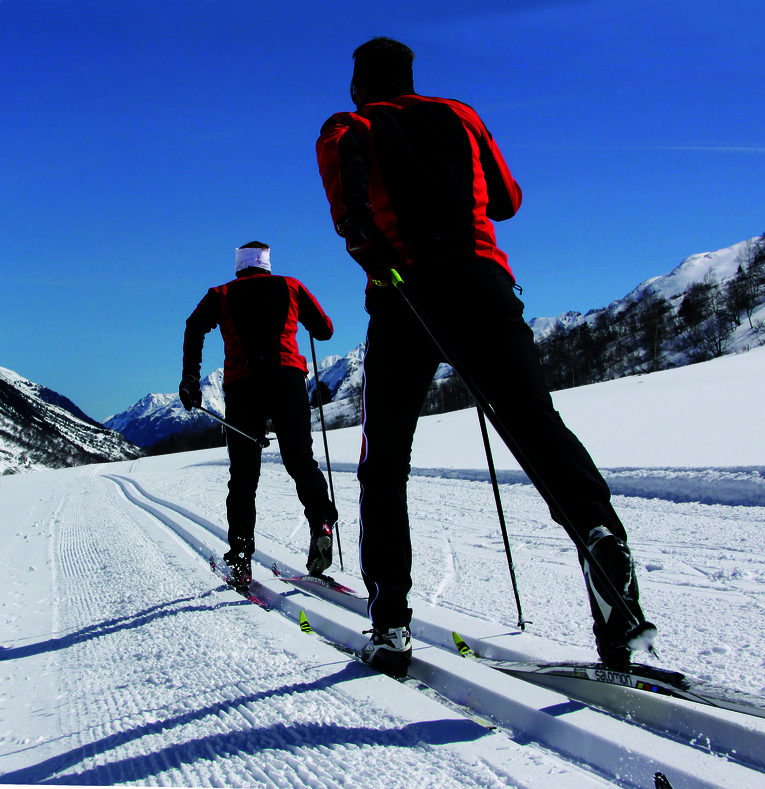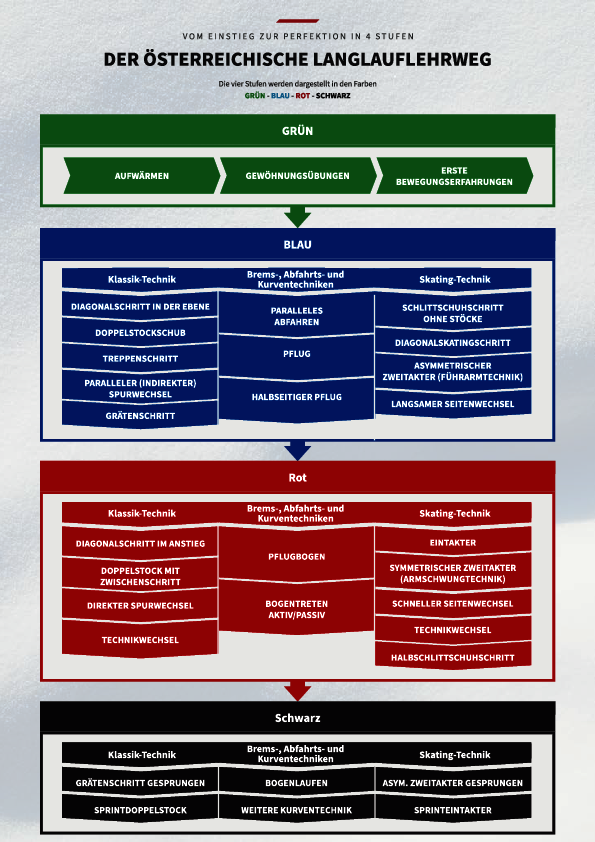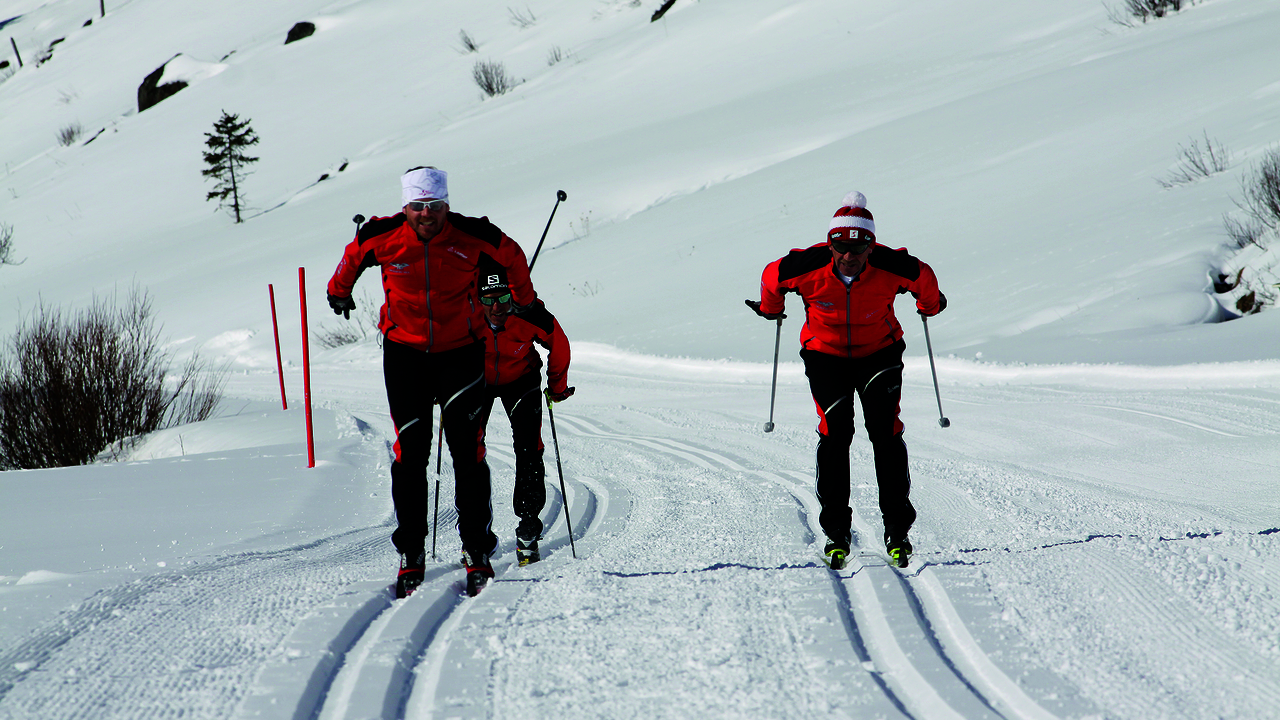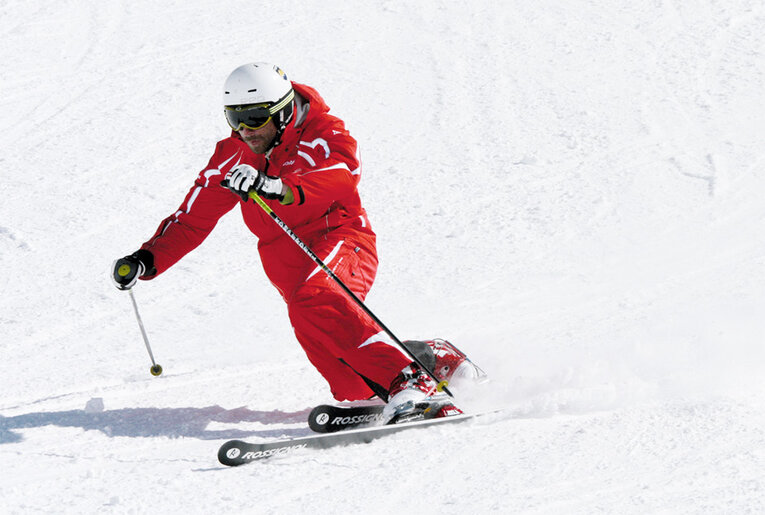You will receive a sound basic education in cross-country skiing, whereby the classic technique as well as the skating technique is taught. Other important topics include the pedagogically correct handling of children and an introduction to cross-country skiing without boundaries.
Nordic skiing is a total body movement, where arms with the poles and legs are used for propulsion. The entire torso and shoulder muscles play a stabilizing and dynamic function. For this reason cross-country skiing uses more muscle groups than almost any other sport. As the principal movement is sliding, cross-country skiing is a particularly low impact sport which simultaneously trains a number of coordination skills such as balance, rhythm, etc. Cross-country skiing is even ideal for strengthening the cardiovascular system. From children to senior citizens, this sport can easily be learned and practiced.
